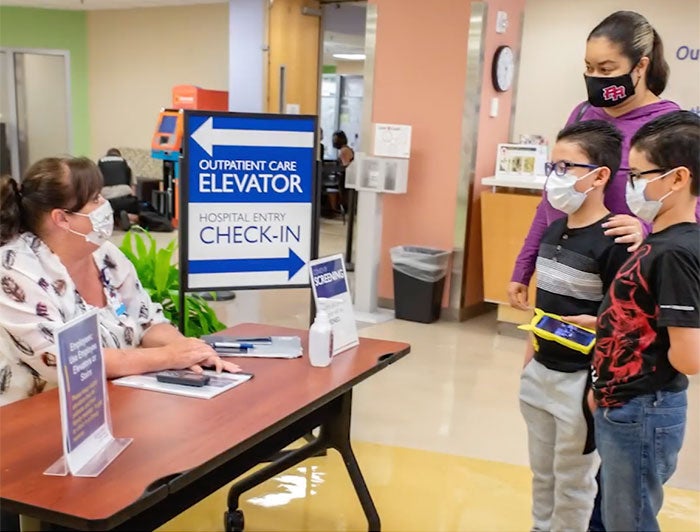Johns Hopkins Bayview Medical Center: Focusing on Details and Emphasizing Transparency Helps Reduce HAIs

Observing an uptick in health care-associated infections during the COVID-19 pandemic, the hospital epidemiology and infection control (HEIC) team at Johns Hopkins Bayview Medical Center took action to reverse the trend. The team created a “Details Matter” campaign to decrease central line-associated bloodstream infections, catheter-associated urinary tract infections and methicillin-resistant Staphylococcus aureus (MRSA) bacteremia.
Interventions included:
- Incorporating frequent checks and reminders for chlorhexidine gluconate (CHG) bathing for patients with central lines.
- Scheduling regular rounds with unit infection prevention professionals and nurses to assess line dressing and label tubing and medications.
- Developing an assessment program for cleaning shared patient equipment.
- Focusing on proper isolation and personal protective equipment.
- Using root cause analysis with unit teams and leaders to dig into details and identify areas for improvement.
The HEIC team partnered with the department of medicine/hospitalist team to monitor device-related infections. For example, the teams regularly reviewed central lines and indwelling urinary catheters and would prompt the conversation to assess need.
During the pandemic, the medical center relied heavily on agency or traveling nurses. Partnering with the marketing team, the HEIC team created an infection control expectations document to share with these nurses during their orientation. This information was provided in addition to the medical center’s required infection control trainings.
Team members say conveying the message across the organization that “details matter” is critical to success. “The simple act of wearing and using PPE properly and having good hand hygiene practices are the best ways to protect yourself and your patients from infection,” said Ashlee Vannoy, MPH, infection control epidemiologist.
Transparency also is a key element for success. The team at Johns Hopkins Bayview Medical Center shared data with units/departments, scheduled regular rounding to answer questions and provide additional support as needed, and involved staff in root cause analysis.
As the team continues leading efforts to decrease HAIs at the medical center, it plans to update its CHG practice and central line kits. Another priority is reinvigorating CLABSI education and educating staff to monitor practices related to central lines and indwelling catheters.
Key Takeaways
Targeted Problems: CLABSI, CAUTI, MRSA Bacteremia
Interventions Used:
- Created a “Details Matter” campaign with tips, pictures of do’s and don’ts, and QR codes to facility policies
- Regular rounding to assess line dressings, and tubing and medication labeling
- Examined cleaning process of shared patient equipment
- Involved staff in root cause analyses
- Partnered with Marketing to create an Infection Control Expectations Document to agency staff during their orientation
Impact: From 2021 to 2022:
- Decreased CLABSI SIR by 9%
- Decreased CAUTI SIR by 45%
- Decreased hospital-onset MRSA bacteremia SIR by 44% - the lowest it has been in 8+ years

